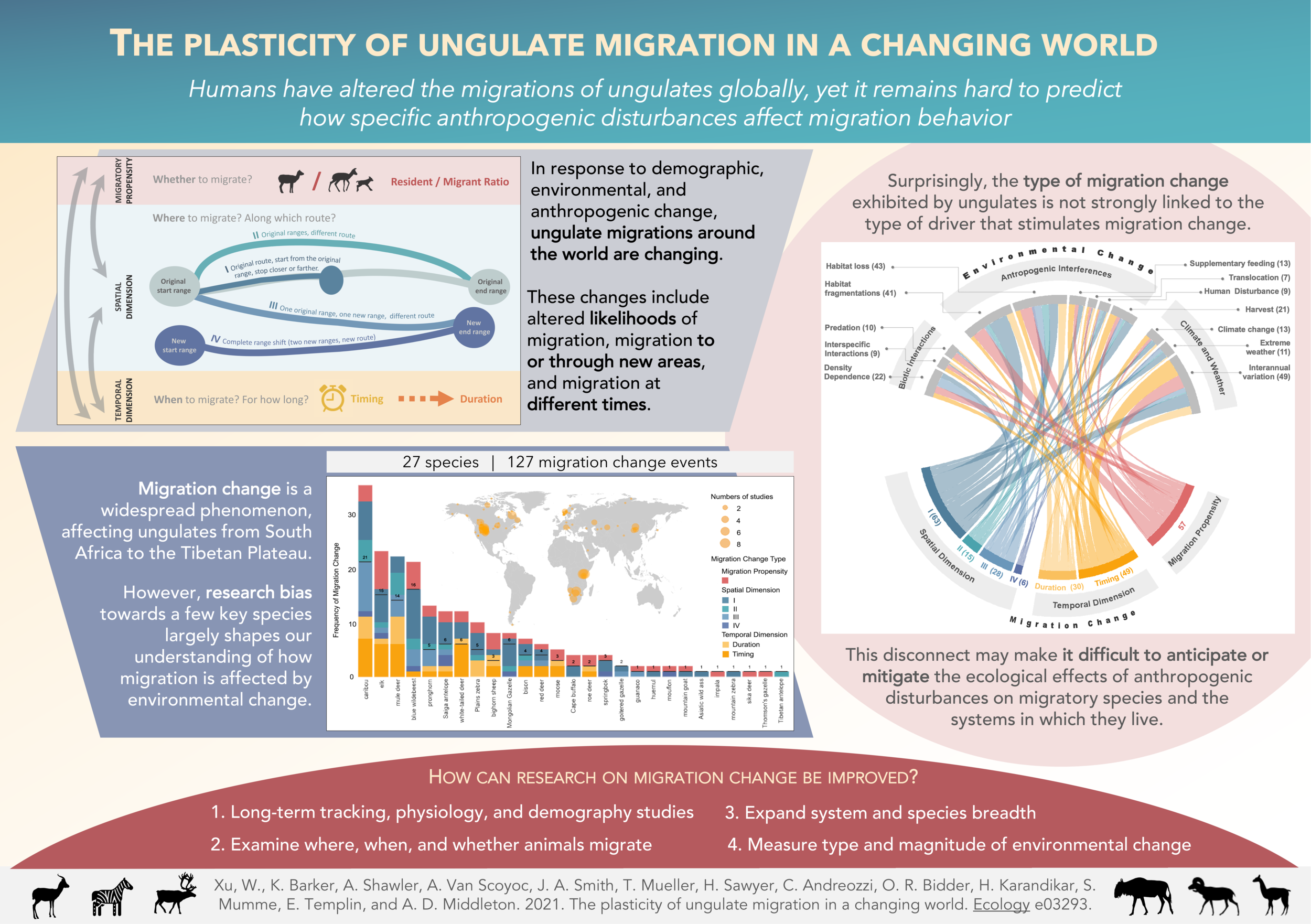I’m very excited to share our paper titled, “The plasticity of ungulate migration in a changing world”, led by the fearless, Wenjing Xu, and the core team of Amy Van Scoyoc, Kristin Barker and myself. Our co-authors include Hall Sawyer, Thomas Mueller and other members of the Middleton Lab group. Below is the abstract and graphic created by the brilliant Justine Smith:
Abstract
Migratory ungulates are thought to be declining globally because their dependence on large landscapes renders them highly vulnerable to environmental change. Yet recent studies reveal that many ungulate species can adjust their migration propensity in response to changing environmental conditions to potentially improve population persistence. In addition to the question of whether to migrate, decisions of where and when to migrate appear equally fundamental to individual migration tactics, but these three dimensions of plasticity have rarely been explored together. Here, we expand the concept of migratory plasticity beyond individual switches in migration propensity to also include spatial and temporal adjustments to migration patterns. We develop a novel typological framework that delineates every potential change type within the three dimensions, then use this framework to guide a literature review. We discuss broad patterns in migratory plasticity, potential drivers of migration change, and research gaps in the current understanding of this trait. Our result reveals 127 migration change events in direct response to natural and human‐induced environmental changes across 27 ungulate species. Species that appeared in multiple studies showed multiple types of change, with some exhibiting the full spectrum of migratory plasticity. This result highlights that multi‐dimensional migratory plasticity is pervasive in ungulates, even as the manifestation of plasticity varies case by case. However, studies as far have rarely been able to determine the fitness outcomes of different types of migration change, likely due to the scarcity of long‐term individual‐based demographic monitoring as well as measurements encompassing a full behavioral continuum and environmental gradient for any given species. Recognizing and documenting the full spectrum of migratory plasticity marks the first step for the field of migration ecology to employ quantitative methods, such as reaction norms, to predict migration change along environmental gradients. Closer monitoring for changes in migratory propensity, routes, and timing may improve the efficacy of conservation strategies and management actions in a rapidly changing world.
Graphic created by Justine Smith
